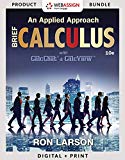
Using a Taylor Polynomial Approximation In Exercises 103–106, use the sixth-degree Taylor polynomial centered at c for the function f to obtain the required approximation. Then determine the maximum error of the approximation.
Want to see the full answer?
Check out a sample textbook solution
Chapter 10 Solutions
Bundle: Calculus: An Applied Approach, Brief, Loose-leaf Version, 10th + WebAssign Printed Access Card for Larson's Calculus: An Applied Approach, 10th Edition, Single-Term
- Question Given the graph of f(z) below, identify the graph of f'(z). Select the correct answer below: -7-6-5-4-3-2 1 2 3 4 5 6 + 123. -7-6-5-4-3 12 + 4-3-2-1 1arrow_forwardFind this expression in frequency domain in a expression y(t), in time, that is.arrow_forwardplease dont use chat gptarrow_forward
- Question Given the graph of f(z) below, find the graph of the derivative of f(z). Select the correct answer below: ° 7-6-5-4-3 123 ° ° 2 -7-6-5-4-3- 123 -° 2-4 -°- °- -7-6-5-4-3-2-1 1 5 +arrow_forwardWhich of the functions shown below is differentiable at = 0? Select the correct answer below: -7-6-5-4- -6-5-4-3-21, -7-6-5-4-3-2 -7-6-5-4-3-2-1 2 4 5 6 -1arrow_forwardcorrect answer is Acould you please show me how to compute using the residue theoremarrow_forward
- Algebra & Trigonometry with Analytic GeometryAlgebraISBN:9781133382119Author:SwokowskiPublisher:Cengage
